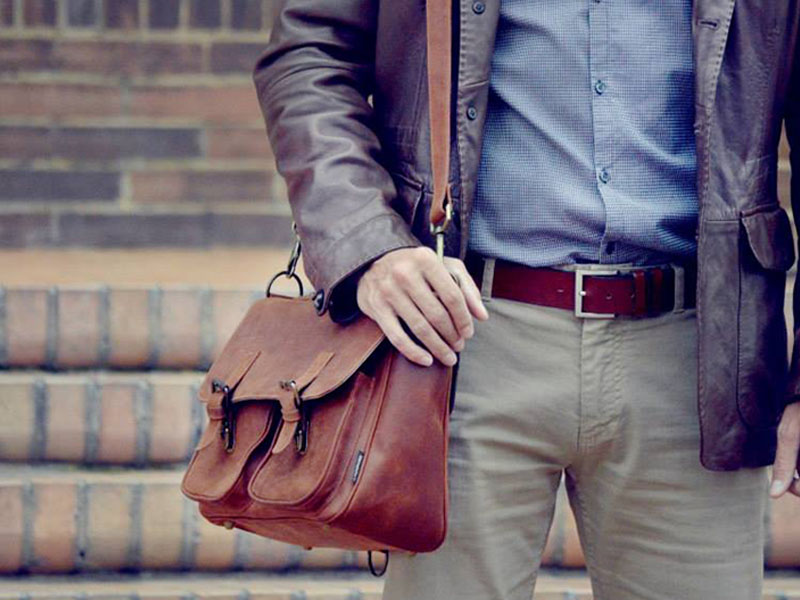Since ancient times, people have loved leather for its durability, practicality, and earthy aesthetic. When it comes to choosing your own leather pieces though, you can probably see the style you like in your head, but it can be hard to define. This is especially true when it comes down to different types of leather, and the techniques used to create the different looks. Read on to arm yourself with the vocabulary to get exactly what you want, and know that you’re getting the best quality leather out there.
Full Grain Leather
Full Grain Leather is the highest-quality leather you can get, because it includes multiple layers of hide, including the very top layer, which is the most dense and unique. This makes it thicker, richer, smoother, and more durable, because the farther up the grain you travel, the more vertical and dense the fibers are, making them less likely to come apart. Full Grain leather also carries the most character, because it has not been sanded or treated to remove “imperfections” and thus compromise the density of the grain. This means it contains all of the prestigious character from the surface of the animal’s skin, like scratches, brands, unique color patterns or even bite marks. Full Grain is also the only type of leather that can completely soften and patina over time, because it’s thick enough for the markings and oils to settle and shift naturally, instead of being dried out and sanded off, as is the case with thinner, or artificially enhanced leather.
Top Grain Leather
Top Grain Leather is second only to Full Grain in quality. It is made by removing the top layer of grain from the skin, and refinishing the layer underneath to make a smoother, unblemished surface. Although it’s almost as strong and durable as Full Grain leather, it is made from the lower, less vertical fibers that can come apart more easily, and it contains none of the raw character, or ability to soften and patina the way real, raw leather does. But it’s thinner cut and smooth surface make it easy for manufacturers to work with, which is why Top Grain leather is the most ubiquitous type of “good quality” leather, and is the type that designer leather goods and leather jackets are made from.
Genuine Leather
Genuine Leather is the third highest grade of leather, and is produced from the layers of hide that remain after the top is split off for the top two grades. The surface is usually refinished or spray painted to resemble a higher grade, and can be smooth or rough, depending on what kind of artificial grain filler is added to it. This is why genuine Leather is often the grade that is used to make suede. Suede is soft, and much tougher than cloth, making it perfect for things like linings, or accents on other leather pieces, but it pulls apart easily over areas that are often put under stress. Manufacturers call it “Genuine Leather” despite the fact that it’s highly manipulated and made from the dregs of the leather hide, because it is still, technically, leather.
Bonded Leather
Bonded Leather, at the very bottom of the leather pyramid, is the dust and shavings of the remaining leather hide that have been glued and pressed together, usually using polyurethane or latex, on top of a fiber sheet. Leftover scraps are ground together with glue and artificially resurfaced in a process similar to how vinyl is made, which is why this type of “leather” is very weak, and quickly degrades. With Bonded Leather, there’s no real way of telling what percent of organic versus chemical material you’re getting, and the process can actually be convincingly imitated by mixing up dirt with water and flour, pressing it flat, and letting it dry in the sun. Because it’s the cheapest, Bonded Leather is most common for large scale, commercial uses, and is usually painted to look like full or top grain leather. It’s also what bibles are usually bound with.

